文章目录
企业级Nginx使用-day1
学习目标和内容
1、能够了解Nginx的信号参数
2、能够进行平滑升级Nginx
3、能够配置server虚拟机
4、能够部署上线项目到LNMP架构中
5、能够了解Nginx的常用官方模块
6、能够了解日志相关使用
一、重装和升级
在实际业务场景中,需要使用软件新版本的功能、特性。就需要对原有软件进行升级或者重装操作。
旧statble 稳定版 1.14
stable 稳定版 1.16
mainline 主线版本 最新的 1.17
1、信号参数
Kill 命令 传输信号给进程 Nginx的主进程
TERM, INT(快速退出,当前的请求不执行完成就退出) -s stop
QUIT (优雅退出,执行完当前的请求后退出) -s quit
HUP (重新加载配置文件,用新的配置文件启动新worker进程,并优雅的关闭旧的worker进程) -s reload
USR1 (重新打开日志文件) -s reopen
USR2 (平滑的升级nginx二进制文件 拉起一个新的主进程 旧主进程不停止)
WINCH (优雅的关闭worker进程)
以上几个信息命令都是发送给master主进程的
语法:
Kill 选项参数 pid
##关闭nginx
##快速关闭
kill -INT pid
##优雅关闭
kill -QUIT pid
2、重新安装
①停止掉服务,删除编译的安装的软件包和源码包
②重新解压编译安装即可
注意:如果有需要,请备份配置文件和网站目录里的资源文件
3、平滑升级
升级软件版本之后,需要启动新的版本,启动不了,端口已经被占用
如果直接把旧版本的服务停止掉,会影响线上业务的使用
最佳解决办法:
①旧的不先停掉
②新的又可以起来
③旧的和新的同时提供服务,旧的请求完成之后,就停掉旧进程
-USR2 平滑启动一个进程(平滑升级)
-WINCH 优雅的关闭子进程
-QUIT 优雅关闭主进程
①编译安装新版本
shell > tar xvf nginx-1.16.0.tar.gz
shell > cd nginx-1.16.0
shell > ./configure --prefix=/usr/local/nginx --user=www --group=www --with-http_ssl_module --with-http_stub_status_module --with-http_realip_module
shell > make && make install
升级新版本,需要把软件的安装路径,指定到旧版本上。
以上操作完成之后,会把原来的旧版本备份为nginx.old
②新旧版本同时运行
shell > kill -USR2 主进程号
③停止掉旧进程
查看旧的主进程号,并使用kill -WINCH 优雅的关闭的子进程,再关闭旧的主进程
shell > kill -WINCH 旧的主进程号
shell > kill -QUIT 旧的主进程号
在nginx中,默认提供了平滑升级的操作,只需要执行以下命令
#注意先configure 在nginx源码包执行
shell > make install && make upgrade
4、配置文件介绍
查看nignx目录下的配置文件
/usr/local/nginx/nginx.conf
#nginx子进程启动用户
#user nobody;
#子进程数量 一般调整为cpu核数或者倍数
worker_processes 1;
#错误日志定义
#error_log logs/error.log;
#error_log logs/error.log notice;
#error_log logs/error.log info;
#进程pid 存储文件
#pid logs/nginx.pid;
#事件
events {
#每个子进程的连接数 nginx当前并发量 worker_processes * worker_connections
worker_connections 1024;
}
#http协议段
http {
#引入 文件扩展名和与文件类型映射表
include mime.types;
#默认文件类型
default_type application/octet-stream;
#访问日志access.log的格式
#log_format main '$remote_addr - $remote_user [$time_local] "$request" '
# '$status $body_bytes_sent "$http_referer" '
# '"$http_user_agent" "$http_x_forwarded_for"';
#访问日志存储路径
#access_log logs/access.log main;
#linux内核 提供文件读写的机制
sendfile on;
#tcp_nopush on;
#keepalive_timeout 0;
#长连接超时时间 单位为s
keepalive_timeout 65;
#gzip压缩
#gzip on;
#server虚拟主机的配置
server {
#监听端口
listen 80;
#域名 可以有多个 用空格分隔
server_name localhost;
#默认编码
#charset koi8-r;
#access_log logs/host.access.log main;
#location 用来匹配url
location / {
#默认访问的网站路径
root html;
#默认访问页面 从前往后的顺序查找
index index.html index.htm;
}
#error_page 404 /404.html;
# redirect server error pages to the static page /50x.html
#
error_page 500 502 503 504 /50x.html;
location = /50x.html {
root html;
}
# proxy the PHP scripts to Apache listening on 127.0.0.1:80
#
#location ~ \.php$ {
# proxy_pass http://127.0.0.1;
#}
# pass the PHP scripts to FastCGI server listening on 127.0.0.1:9000
#
#location ~ \.php$ {
# root html;
# fastcgi_pass 127.0.0.1:9000;
# fastcgi_index index.php;
# fastcgi_param SCRIPT_FILENAME /scripts$fastcgi_script_name;
# include fastcgi_params;
#}
# deny access to .htaccess files, if Apache's document root
# concurs with nginx's one
#
#location ~ /\.ht {
# deny all;
#}
}
# another virtual host using mix of IP-, name-, and port-based configuration
#
#server {
# listen 8000;
# listen somename:8080;
# server_name somename alias another.alias;
# location / {
# root html;
# index index.html index.htm;
# }
#}
# HTTPS server
#
#server {
# listen 443 ssl;
# server_name localhost;
# ssl_certificate cert.pem;
# ssl_certificate_key cert.key;
# ssl_session_cache shared:SSL:1m;
# ssl_session_timeout 5m;
# ssl_ciphers HIGH:!aNULL:!MD5;
# ssl_prefer_server_ciphers on;
# location / {
# root html;
# index index.html index.htm;
# }
#}
}
主要注意:
http=>server=>location 递进关系
二、企业中常见使用方式
1、server配置
1.1、server虚拟主机配置
在实际生产业务环境中,一台web服务器,需要使用多个网站部署。搭建vhost虚拟机主机实现不同域名,解析绑定到不同的目录。
核心语法
#基于http的web服务
server{
#监听端口
listen 80
#配置虚拟机
server_name shop.lnmp.com
root html/tp5shop;
location / {
index index.php index.html index.htm
}
location ~ \.php$ {
fastcgi_pass 127.0.0.1:9000;
fastcgi_index index.php;
fastcgi_param SCRIPT_FILENAME $document_root$fastcgi_script_name;
include fastcgi_params;
}
}
一般server虚拟主机配置有三类:
①基于域名,将域名配置到server_name上
②基于IP,将IP配置到server_name上
③基于端口,将端口配置到listen
案例一:基于域名的虚拟机配置
①建立网站访问目录
shell > cd /usr/local/nginx/html
shell > mkdir tp5shop
shell > cd tp5shop
#创建测试文件
shell > echo "shop.lnmp.com" >> index.html
shell > echo "shop site by php" >> index.php
②解析域名并绑定
当前客户端是通过windows的浏览器,需要在win下的hosts文件(C:\Windows\System32\drivers\etc\hosts)进行解析域名
nginx配置文件绑定域名
server {
#监听端口
listen 80;
#绑定域名
server_name shop.lnmp.com;
#网站目录
root html/tp5shop;
#默认访问页面
index index.html;
#这段一定不要忘了配置,需要解析php使用到
location ~ \.php$ {
fastcgi_pass 127.0.0.1:9000;
fastcgi_index index.php;
fastcgi_param SCRIPT_FILENAME $document_root$fastcgi_script_name;
include fastcgi_params;
}
}
③浏览器访问查看效果
案例二:配置基于端口的虚拟主机
还是使用上面创建好的tp5shop目录
修改listen配置进行测试
案例三:配置基于IP的虚拟主机
①添加IP
#临时绑定IP
shell > ifconfig eth0:1 192.168.17.220
#查看IP是否绑定成功
shell > ip a
②nginx配置文件添加
server {
listen 80;
server_name 192.168.17.220;
root html/ip;
}
③建立一个IP测试目录
shell > cd /usr/local/nginx/html
shell > mkdir ip
shell > echo "ip site" >> index.html
##2、案例:上线商城项目
①上传项目文件到服务器
shell > cd /usr/local/nginx/html
#把项目压缩包解压
shell > unzip tp5shop.zip
②配置server虚拟机,客户端配置host解析
#编辑配置文件
shell > vim /usr/local/nginx/conf/nginx.conf
#在配置文件中配置server虚拟主机段
server {
listen 80;
server_name shop.lnmp.com;
#tp5shop商城项目基于thinkphp5框架开发,需要绑定默认网站目录为public
root html/tp5shop/public;
index index.php index.html;
location ~ \.php$ {
# root html;
fastcgi_pass 127.0.0.1:9000;
fastcgi_index index.php;
fastcgi_param SCRIPT_FILENAME $document_root$fastcgi_script_name;
include fastcgi_params;
}
}
解析域名进行访问,如果是在windows下,就在c:\Windows\System32\drivers\etc\hosts解析
③创建数据库,导入数据迁移文件
遇到问题:数据没有导入,没有配置项目连接数据库
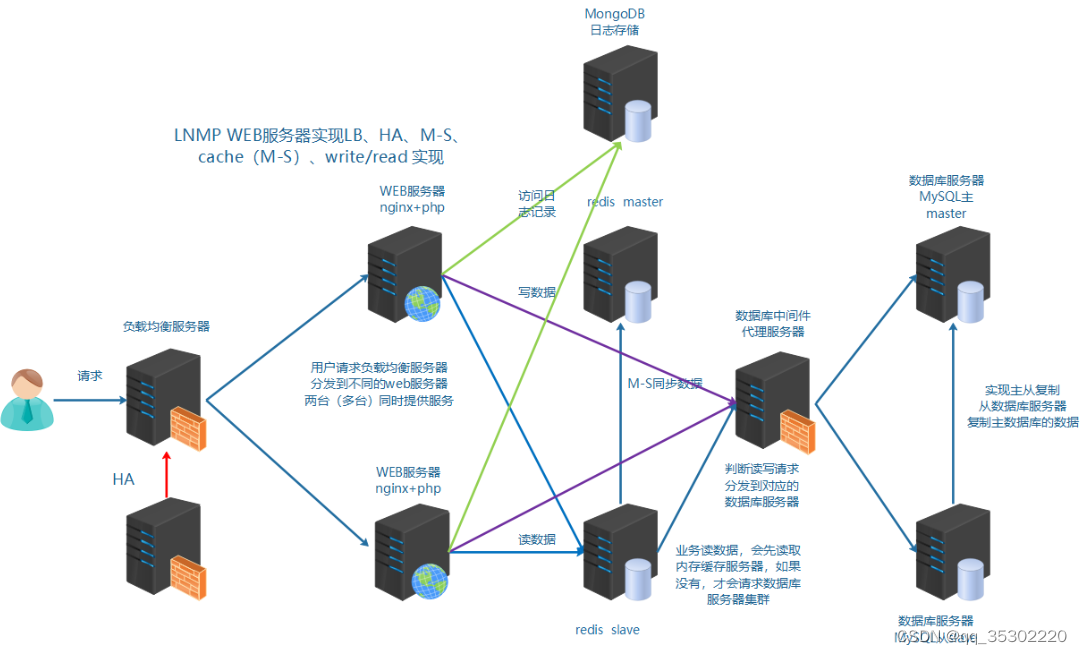
#创建数据库
mysql > create database tp5shop;
#使用数据库
mysql > use tp5shop;
#通过sql文件导入恢复数据
mysql > source /usr/local/nginx/html/tpshop.sql
④配置项目连接数据库
修改项目的连接数据库配置文件
shell > vim /usr/local/nginx/html/tp5shop/application/database.php
需要修改的内容说明
//注意主要连接地址、数据库名称、用户名称、用户密码、连接端口号等参数
//hostname,database,username,password,hostport等参数,根据实际请求修改即可
return [
// 数据库类型
'type' => 'mysql',
// 服务器地址
'hostname' => '127.0.0.1',
// 数据库名
'database' => 'tp5shop',
// 用户名
'username' => 'root',
// 密码
'password' => '123456',
// 端口
'hostport' => '3306',
⑤测试访问
遇到问题:项目需要在runtime文件夹中写入缓存信息(需要写权限)

分析:
①nginx 读取静态文件 用户www
②php-fpm 读取、写入、解析php文件 用户www
应该把runtime目录的所属关系赋予www
shell > cd /usr/local/nginx/html/tp5shop
shell > chown -R www:www ./runtime
3、默认官方模块
3.1、Gzip压缩
压缩文件,使文件变小,传输更快了。目前市场上大部分浏览器是支持GZIP的。IE6以下支持不好,会出现乱码情况。
官方文档:http://nginx.org/en/docs/http/ngx_http_gzip_module.html
示例语法:
#配置到http段里,使整个http服务都启用gzip压缩
#开启gzip压缩
gzip on;
#http协议版本
gzip_http_version 1.0;
#IE浏览器不开启gzip IE6以下会乱码
gzip_disable 'MSIE [1-6].';
#开启gzip 文件的格式
gzip_types image/jpeg image/jpg image/png text/plain text/css;
验证文件是否开启gzip

3.2、客户端缓存
B/S架构里 browser浏览器 就是客户端
告知浏览器获取的信息是在某个区间时间段是有效的。
官方文档:http://nginx.org/en/docs/http/ngx_http_headers_module.html#expires
示例语法:
location ~ \.(js|css)$ {
#单位参数 d day 天|H hour 小时 M 分
expires 1h;
}
#在整个http中生效 配置到http段里
expires 1h
3.3、基于IP的访问控制
基于ngx_http_access_module模块,默认可使用
官方文档:http://nginx.org/en/docs/http/ngx_http_access_module.html
语法:
deny ip 禁止ip访问
allow ip 允许访问
3.4、基于用户的访问控制
基于ngx_http_auth_basic_module模块,默认可用
官方文档:http://nginx.org/en/docs/http/ngx_http_auth_basic_module.html
语法:
auth_basic “提示信息”
auth_basic_user_file /etc/nginx/htpasswd;
配置实现:
①创建用户名和密码存储文件
shell > cd /usr/local/nginx/conf
#htpasswd 如果不存在就通过 yum -y install httpd-tools安装
#生成用户名称和密码
shell > htpasswd -c ./passwd.db lnmp
#输入密码并再次确认密码
#查看passwd.db文件是否创建成功
②在配置文件中进行配置
shell > vim /usr/local/nginx/conf/nginx.conf
配置文件内容
#根据业务需求,配置到server段里
#登录框显示的标题提示
auth_basic "test login"
#加载用户名称和密码校验文件
auth_basic_user_file /usr/local/nginx/conf/passwd.db;
③测试查看
3.5、目录列表显示
显示文件列表,或者需要做一个下载列表
官方文档:http://nginx.org/en/docs/http/ngx_http_autoindex_module.html#autoindex
示例语法:
#开启目录列表显示
autoindex on;
#index 当index默认找不到时,才会使用目录列表
index index;
注意:如果目录中没有配置的默认index访问项,而autoindex又没有开启,不能够查看访问目录列表,就会报出403错误。
3.6、反向代理
正向代理
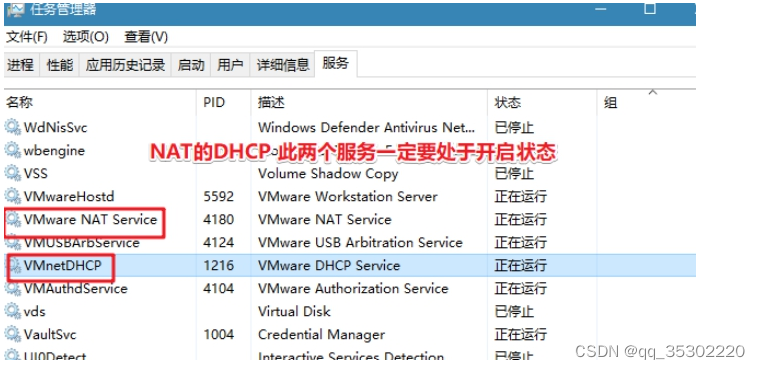
特点:知道自己使用了代理,需要填写代理服务器的IP等相关连接信息
常见于代理客户端上网等操作。
反向代理
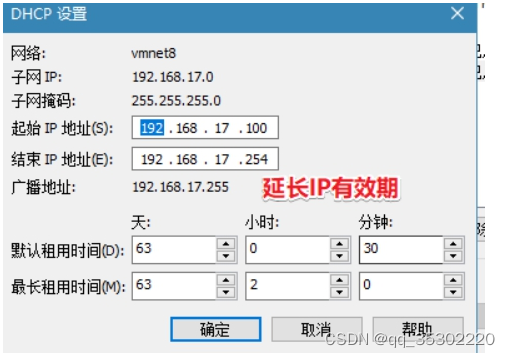
特点:用户是无感知的,不知道使用了代理服务器。反向代理服务器是和真实访问的服务器是在一起的,有关联的。
作用:可以根据实际业务需求,分发代理页面到不同的解释器
可以隐藏真实服务器的路径
常见于代理后端服务器
官方文档:http://nginx.org/en/docs/http/ngx_http_proxy_module.html
①配置反向代理
LNMPA
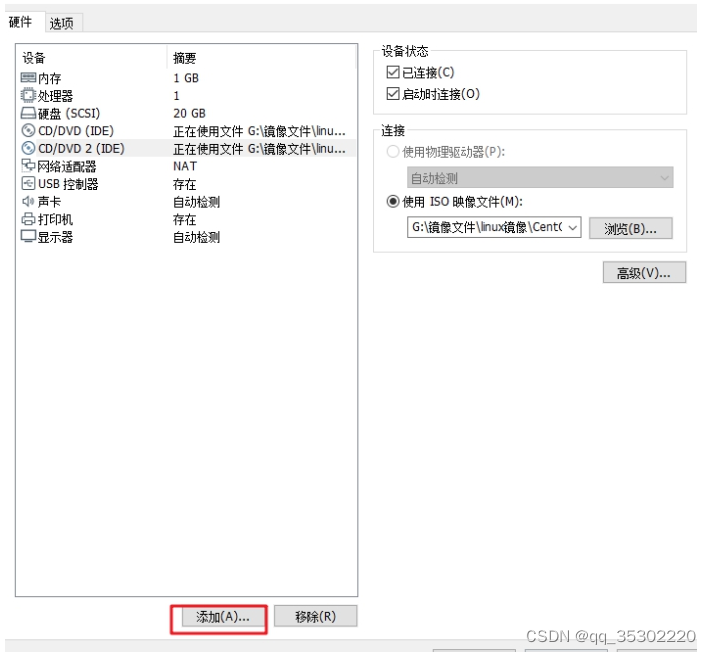
验证例子:
①安装httpd 需改端口8080
#安装apache
shell > yum install -y httpd
#配置apache的配置文件
shell > vim /etc/httpd/conf/httpd.conf
修改配置项
listen 8080
②配置nginx的server并进行转发
location / {
proxy_pass http://127.0.0.1:8080;
}
三、日志管理
日志类型:
①access.log 访问日志 查看统计用户的访问信息 流量
②error.log 错误日志 错误信息 重写信息
1、访问日志
官方文档:http://nginx.org/en/docs/http/ngx_http_log_module.html
①查看access.log
shell > cd /usr/local/nginx/logs
shell > cat access.log
access.log日志文件内容示例
127.0.0.1 - - [06/Oct/2017:11:46:16 +0800] "GET /phpinfo.php HTTP/1.1" 200 25206 "-" "Mozilla/5.0 (Windows NT 10.0; Win64; x64) AppleWebKit/537.36 (KHTML, like Gecko) Chrome/62.0.3202.9 Safari/537.36"
②查看配置解析参数说明
shell > vim nginx.conf
查看访问日志相关参数
#定义日志格式 格式命名 详细格式参数
#log_format main '$remote_addr - $remote_user [$time_local] "$request" '
# '$status $body_bytes_sent "$http_referer" '
# '"$http_user_agent" "$http_x_forwarded_for"';
#访问日志的存储路径配置 调用的日志格式
#access_log logs/access.log main;
| 参数 | 意义 |
|---|---|
| $remote_addr | 客户端的ip地址(代理服务器,显示代理服务ip) |
| $remote_user | 用于记录远程客户端的用户名称(一般为“-”) |
| $time_local | 用于记录访问时间和时区 |
| $request | 用于记录请求的url以及请求方法 |
| $status | 响应状态码,例如:200成功、404页面找不到等。 |
| $body_bytes_sent | 给客户端发送的文件主体内容字节数 |
| $http_user_agent | 用户所使用的代理(一般为浏览器) |
| $http_x_forwarded_for | 可以记录客户端IP,通过代理服务器来记录客户端的ip地址 |
| $http_referer | 可以记录用户是从哪个链接访问过来的 |
访问日志,可以统计分析用户的流量的相关情况。客情分析
2、错误日志
记录一些启动和运行过程中的错误信息
# 定义开启错误日志 日志位置 日志级别
#error_log logs/error.log;
#error_log logs/error.log notice;
#error_log logs/error.log info;
官方文档:http://nginx.org/en/docs/ngx_core_module.html#error_log
shell > cat /usr/local/nginx/logs/error.log
格式示例:
2019/06/06 11:42:43 [error] 25356#0: *38 open() "/usr/local/nginx/html/favicon.ico" failed (2: No such file or directory), client: 192.168.17.1, server: localhost, request: "GET /favicon.ico HTTP/1.1", host: "192.168.17.220", referrer: "http://192.168.17.220/index.php"
3、基于域名日志分割
①开启日志的定义规则
#定义日志格式 定义http里
log_format mylogs '$remote_addr - $remote_user [$time_local] "$request" '
'$status $body_bytes_sent "$http_referer" '
'"$http_user_agent" "$http_x_forwarded_for"';
②重启nginx测试查看
#访问日志的存储路径配置 调用的日志格式
#在server段里面配置 也就是在当前server里的访问日志,会被写入定义的这里
access_log logs/shop.lnmp.com_access.log mylogs;
日志切割的方式有很多种:
①基于域名分开存储
②日志轮转 时间段
③自定义脚本 定时检测大小 根据文件大小进行切割
企业级Nginx使用-day2
学习目标和内容
1、能够编译安装并使用第三方模块
2、能够理解location语法的作用
3、能够了解URL的rewrite重写规则
4、能够理解防盗链原理和实现
一、第三方模块使用
Nginx官方没有的功能,开源开发者定制开发一些功能,把代码公布出来,可以通过编译加载第三方模块的方式,使用新的功能。
第三方模块网址:https://www.nginx.com/resources/wiki/modules
1、编译安装第三方模块
①上传第三方模块压缩包
上传ngx-fancyindex-v0.4.3.tar.gz和tar xvf echo-nginx-module-0.61.tar.gz,到/root/soft下。
编译安装以上两个Nginx的第三方模块。
前置条件
-- ubuntu安装
# 安装PCRE库
sudo apt-get install libpcre3-dev
# 如果你已经安装了PCRE库,还需要确保软件包配置脚本能够找到它,设置这些环境变量
export PCRE_LIBS="-L/path/to/pcre/lib -lpcre"
export PCRE_CFLAGS="-I/path/to/pcre/include"
-- centos安装
# 安装PCRE库
sudo yum update
sudo yum install pcre pcre-devel
sudo yum install pcre-tools
sudo yum install pcre-static
# 安装OpenSSL库及其开发包
sudo yum install openssl openssl-devel
export LD_LIBRARY_PATH=/usr/local/ssl/lib:$LD_LIBRARY_PATH
# 查OpenSSL版本:
openssl version
# 创建www用户
adduser www
②编译升级安装,并升级
shell > tar xvf ngx-fancyindex-v0.4.3.tar.gz
shell > tar xvf echo-nginx-module-0.61.tar.gz
shell > cd /root/soft/nginx-1.16.0
shell > ./configure --prefix=/usr/local/nginx --user=www --group=www --with-http_ssl_module --with-http_stub_status_module --with-http_realip_module --add-module=/root/soft/ngx-fancyindex-0.4.3/ --add-module=/root/soft/echo-nginx-module-0.61
shell > make && make install && make upgrade
-- 要启动nginx并使用指定的配置文件
nginx -c /path/to/nginx.conf
/usr/local/nginx/sbin/nginx -c /usr/local/nginx/conf/nginx.conf
# 更改配置文件,重新加载配置文件
/usr/local/nginx/sbin/nginx -s reload
2、fancy-index
文档介绍:https://www.nginx.com/resources/wiki/modules/fancy_index/
https://github.com/aperezdc/ngx-fancyindex
https://github.com/aperezdc/ngx-fancyindex/releases
fancy-index模块美化列表效果

实现操作步骤:
①查看确认编译模块参数
#查看版本号及其编译参数
shell > /usr/local/nginx/sbin/nginx -V
确认是否包含ngx-fancyindex模块
②配置实现
#可以配置到http、server、location等下。推荐配置到server下
#开启fancy indexes 列表显示功能
fancyindex on;
#显示更为可读的文件大小
fancyindex_exact_size off;
目录显示配置:
fancyindex on;
fancyindex_exact_size off;
fancyindex_time_format "%Y-%m-%d %H:%M:%S";
fancyindex_localtime on;
fancyindex_directories_first on;
3、echo
echo模块常用来进行调试用,比如输出打印Nginx默认系统变量
示例语法:
location / {
#输出为文本类型
default_type text/plain;
#default_type text/html;
#打印输出查看变量信息
echo $document_root;
}
验证是否一下$document_root是否和root设定的值一致
二、发行版本
1、Nginx社区免费版
2、NGINX+商业版
3、淘宝的tengine
tengine是alibaba公司,在Nginx的基础上,开发定制,更加服务自己业务的服务器软件。后来进行了开源。
#解压编译安装
shell > tar xvf tengine-2.3.0.tar.gz
shell > cd tengine-2.3.0
#tengine从2.3.0版本之后,tengine的模块被分离到modules,需要自己手动编译安装
shell > ./configure --prefix=/usr/local/tengine --add-module=/root/soft/tengine-2.3.0/modules/ngx_http_footer_filter_module
shell > make && make install
#查看默认加载的模块和参数信息
shell > /usr/local/tengine/sbin/nginx -V
#tengine 默认提供-m参数 查看已经编译加载的模块
案例:通过tengine内置模块 自动添加页脚信息 标识服务器信息
使用ngx_http_footer_filter_module包含的语法 注意确认是否已经加载此模块
①修改配置文件并重载服务
shell > vim /usr/local/tengine/conf/nginx.conf
语法规则:
#可定义在http、server、location中,建议在server中
#定义需要插入footer的响应类型(Response Content-Type)。
footer_types "text/plain" "text/css" "application/x-javascript";
#在上面定义的HTTP响应的正文结尾插入指定的format内容。如果format中含有变量,会被替换为变量当前的值。
footer "$host_comment";
示例配置:
server {
listen 80;
server_name localhost;
root html;
#开启加载注释页脚信息
footer_types "text/plain" "text/css" "application/x-javascript";
footer "$host_comment";
}
②访问页面查看
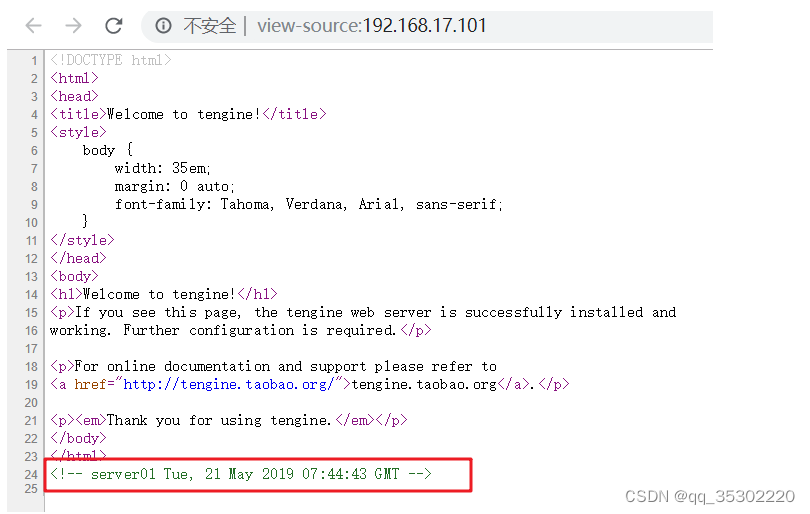
4、OpenResty
openresty 在Nginx的基础上,结合lua脚本实现高并发的web平台。作者章亦春
WAF nginx+lua+redis 实现应用型防火墙 动态把IP加入黑名单
编译安装步骤:
#解压编译并安装
shell > tar xvf openresty-1.15.8.1.tar.gz
shell > cd openresty-1.15.8.1
shell > ./configure --prefix=/usr/local/openresty
shell > make && make install
#查看默认编译参数及其模块
shell > /usr/local/openresty/sbin/openresty -V
案例:使用lua模块语法
①修改配置文件
shell > vim /usr/local/openresty/nginx/conf/nginx.conf
示例配置:
location / {
root html;
index index.html index.htm;
#默认返回类型
default_type text/html;
#调用lua模块的语法
content_by_lua 'ngx.say("hello openresty")';
}
②访问页面查看
三、URL匹配之location
Location 配置语法
http://nginx.org/en/docs/http/ngx_http_core_module.html#location
1、location匹配规则

① = 精确匹配
location = / {
#规则
}
则匹配到 http://www.example.com/ 这种请求
② ~ 大小写敏感 区分大小写
location ~ /Example/ {
#规则
}
请求示例
http://www.example.com/Example/ [成功]
http://www.example.com/example/ [失败]
③ ~ 大小写忽略*
location ~* /Example/ {
#规则
}
请求示例
http://www.example.com/Example/ [成功]
http://www.example.com/example/ [成功]
④ ^~ 只匹配以 uri 开头
location ^~ /img/ {
#规则
}
请求实例
以 /img/ 开头的请求,都会匹配上
http://www.example.com/img/a.jpg [成功]
http://www.example.com/img/b.mp4 [成功]
http://www.example.com/bimg/b.mp4 [失败]
http://www.example.com/Img/b.mp4 [失败]
⑤ / 其他匹配都不成功 就匹配此项
location / {
#规则
}
如果路径是资源文件是存在的,会优先获取资源文件
location匹配优先级
(location =) > (location 完整路径) > (location ^~ 路径) > (location ,* 正则顺序) > (location 部分起始路径) > (/)
2、location匹配跳转
@+name
@,nginx内部跳转
location /img/ {
#如果状态码是404 就指定404的页面为什么
error_page 404 = @img_err;
}
location @img_err {
# 规则
return 503;
}
以 /img/ 开头的请求,如果链接的状态为 404。则会匹配到 @img_err 这条规则上
四、URL重写
ngx_http_rewrite_module模块用于使用PCRE正则表达式更改请求URI,返回重定向,以及有条件地选择配置
官方文档地址:<http://nginx.org/en/docs/http/ngx_http_rewrite_module.html
1、return
该指令用于结束规则的执行并返回状态码给客户端.
403 Forbidden.服务器已经理解请求,但是拒绝执行它
404 Not Found.请求失败,请求所希望得到的资源未在服务器上发现.404这个状态码被⼴泛应⽤于当服务器不想揭示为何请求被拒绝,或者没有其他适合的响应可⽤的情况下.
500 Internal Server Error.服务器遇到⼀个未曾预料的状况,导致它无法完成对请求的处理.⼀般来说,这个问题都会在服务器的程序码出错时出现.
502 Bad Gateway.作为网关或代理工作的服务器尝试执行请求时,从上游服务器接收到无效的响应.
503 Service Unavailable.由于临时的服务器维护或过载,服务器当前无法处理请求.这个状况是临时的,并且将在一段时间以后恢复.503状态码的存在并不意味着服务器在过载的时候必须使⽤它.某些服务器只不过是希望拒绝客户端的连接.
504 Gateway Timeout作为网关或代理工作的服务器尝试执行请求时,未能及时从上游服务器(URI标识出的服务器,例如HTTP,FTP,LDAP)或辅助服务器(例如DNS)收到响应。
请求状态码:
https://developer.mozilla.org/zh-CN/docs/Web/HTTP/Status
示例语法:
#可以匹配到server location if中,推荐配置到location中
return 403;
2、rewrite
rewrite 匹配到请求URI,重写到新的URI
rewrite语法 匹配到,替换为其他内容
语法 rewrite 匹配内容 替代内容 标记
官方文档地址:http://nginx.org/en/docs/http/ngx_http_rewrite_module.html#rewrite
flag标记说明:
last #本条规则匹配完成后,继续向下匹配新的location URI规则,客户端URL地址不会发生跳转
break #本条规则匹配完成即终止,不再匹配后面的任何规则,客户端URL地址不会发生跳转
redirect #返回302临时重定向,浏览器地址会显示跳转后的URL地址
permanent #返回301永久重定向,浏览器地址栏会显示跳转后的URL地址
匹配顺序:多条rewrite,从上到下匹配,匹配到之后就不在匹配其他rewrite规则。
五、URL相关案例实现
1、案例:资源重定向实现
业务需求描述:
实际业务不存在index.html,需要重写访问index.php
URL为index.html,而实际访问的是index.php,对外被认为是html静态页面
以上方案就是seo优化伪静态的使用,把真实的后端的页面,伪装为静态html页面。
①修改配置
shell > vim /usr/local/nginx/conf/nginx.conf
添加配置
rewrite /index.html /index.php last;
③重载配置测试访问
2、案例:域名重定向实现
网站的域名升级了,需要启用新的域名使用。
但是用户却不知道,还可能使用旧的域名访问网站。
需要把通过旧域名访问的来源,重定向到新的域名。
把shop.lnmp.com的请求全部重定向到新域名www.shop.com
rewrite / http://www.shop.com permanent;
示例配置:
#shop.lnmp.com的请求全部重定向到www.shop.com中
server {
listen 80;
server_name shop.lnmp.com;
rewrite / http://www.shop.com permanent;
}
server {
listen 80;
#绑定新域名即可
server_name www.shop.com;
root html/tp5shop/public;
index index.php index.html;
#deny 192.168.17.1;
#auth_basic "shop login";
#auth_basic_user_file /usr/local/nginx/conf/passwd.db;
access_log logs/shop.lnmp.com_access.log mylogs;
location / {
rewrite /index.html /index.php last;
}
location ~ \.php$ {
fastcgi_pass 127.0.0.1:9000;
fastcgi_index index.php;
fastcgi_param SCRIPT_FILENAME $document_root$fastcgi_script_name;
include fastcgi_params;
}
#location ~ \.(js|css) {
# expires 2h;
#}
}
注意新域名www.shop.com 记得在客户端的hosts文件中解析。
3、案例:防盗链原理和实现
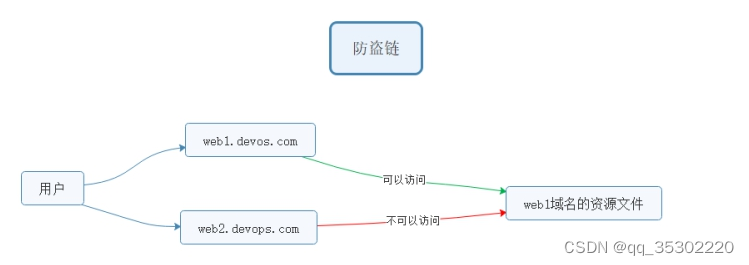
业务需求描述:
域名A的资源文件,经常被域名B直接调用访问。
而用户经常访问域名B,看到的资源(图片等)以为是域名B的,实际则是域名A的。
但是域名A没有从中获得任何收益,缺要给域名B来源的访问耗费服务器资源和带宽。
所以,禁止域名B直接访问和调用域名A的资源的方式,就被称为"防止盗链"
语法:
定义允许访问的域名来源
valid_referers none blocked servername
none blocked 没有referer的情况,直接访问资源的情况
if ($invalid_referer) {}
1、在ip的虚拟主机,静态文件调用图片
2、shop的虚拟主机,禁止ip的虚拟主机调用图片
①ip虚拟主机目录建立静态文件访问shop虚拟主机的图片资源
shell > cd /usr/local/nginx/html
shell > echo '<img src="http://www.shop.com/static/home/img/2.jpg" />' >> img.html
②在shop虚拟主机配置中,防止其他虚拟机主机盗链
#定义在server里 shop的server
#图片请求防盗链
location ~* \.(jpg|png|jpeg|gif|bmp) {
valid_referers www.shop.com;
if ($invalid_referer) {
return 404;
}
}
六、安全
1、反向代理
实现隐藏真实服务的操作,起到一定安全作用
2、隐藏版本号
Nginx对外提供服务,为了避免被针对某个版本的漏洞进行攻击。经常做法是隐藏掉软件的版本信息。提供一定的安全性。
#将以下配置加入到http段配置中
server_tokens off
3、Https和CA
server {
listen 443 ssl;
#绑定好域名
server_name web1.heimadevops.top;
#指定证书相关位置
ssl_certificate /usr/local/nginx/conf/1_web1.heimadevops.top_bundle.crt;
ssl_certificate_key /usr/local/nginx/conf/2_web1.heimadevops.top.key;
ssl_session_cache shared:SSL:1m;
ssl_session_timeout 5m;
ssl_ciphers HIGH:!aNULL:!MD5;
ssl_prefer_server_ciphers on;
location / {
root html;
index index.html index.htm;
}
}
#http跳转到https
server {
listen 80;
server_name web1.heimadevops.top;
rewrite / https://web1.heimadevops.top permanent;
}
客户端注意解析域名
Tip:Nginx支持pathinfo路径 重写方式
需求
http://www.shop.com/home/goods/index/cate_id/187.html 默认不支持访问
重写成为
http://www.shop.com/index.php?s=home/goods/index/cate_id/187.html
语法规则示例
location / {
rewrite /index.html /index.php last;
#判断请求的路径 不存在
if (!-e $request_filename) {
# 捕获到所有路径信息 重写为index.php的s参数 last需要匹配之后的location规则
rewrite ^(.*)$ /index.php?s=$1 last;
}
}
























 被折叠的 条评论
为什么被折叠?
被折叠的 条评论
为什么被折叠?








